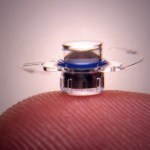Blindness
A few of the recent pieces I've liked:
Alicia Menendez at Fusion: Pregnant in the time of Zika: How Congress failed women like me
Vann R. Newkirk II in The Atlantic: Can free markets keep people healthy?
Brittney Martin in the Dallas Morning News: Texas' rate of pregnancy-related deaths nearly doubles
Sara Kliff and Ezra Klein at Vox: Public option? Status quo? Collapse? What comes next for Obamacare
Peggy Lowe at NPR/ Harvest Media: Working "The Chain," Slaughterhouse Workers Face Lifelong Injuries
David Dobbs in National Geographic: Why There's New Hope About Ending Blindness
Researchers at Stanford University have accomplished what was once considered impossible. They have partially restored vision in blind. Check out this Youtube video to see how they did it
Another day, another study that finds poverty is linked to adverse and often preventable health outcomes. This time, it’s vision loss.
Last week, the Centers for Disease Control and Prevention published new data finding that poverty is significantly correlated with severe vision loss, which is defined as being blind or having serious difficulties seeing even with glasses. In examining data from the American Community Survey, researchers found that among counties in the top quartile for severe vision loss, more than 55 percent were also in the top quartile for poverty. The South is home to…
Of the first dozen times or so that I ever saw Joel, my then future brother in law, I think we were in a restaurant a good four or five times. This was probably just a chance event, but there were a number of dinners and one lunch with the family that Joel and Alyssa (Amanda's sister) attended. And I noticed something. Joel and Alyssa seemed to be very keen on the idea of consulting over what to eat. Many couples do this, including Amanda and me. For example, if there are two items on the menu that I know I'd be happy with, and Amanda is pretty sure about one but not the other yet wants…
WE all know that bats and dolphins use echolocation to navigate, by producing high frequency bursts of clicks and interpreting the sound waves that bounce off objects in their surroundings. Less well known is that humans can also learn to echolocate. With enough training, people can use this ability to do extraordinary things. Teenager Ben Underwood, who died of cancer in 2009, was one of a small number of blind people to master it. As the clip below shows, he could use echolocation not only to navigate and avoid obstacles, but also to identify objects, rollerskate and even play video games…
My grandmother suffered in her old age from macular degeneration, a common age-related eye disease that causes the center of your visual field (the macula) to gradually fritz out. As it affected her more and more, the font size in her emails ballooned to cartoonish sizes. She began walking with a cane, and needed a fancy electronic doo-dad to tell her when her cup of tea was full. By the end of her life, she was totally blind.
Watching my grandmother wink out from the world of seeing was tragic; the knowledge of macular degeneration's heredity terrifying. Relatives of those who have…
FOR most of us, the ability to navigate our environment is largely dependent on the sense of vision. We use visual information to note the location of landmarks, and to identify and negotiate obstacles. These visual cues also enable us to keep track of our movements, by monitoring how our position changes relative to landmarks and, when possible, our starting point and final destination. All of this information is combined to generate a cognitive map of the surroundings, on which successful navigation of that environment later on depends.
Despite the importance of vision for navigation,…
tags: neuroscience, health, medicine, health care, blindness, poverty, India, Pawan Sinha, TEDTalks, streaming video
Pawan Sinha details his groundbreaking research into how the brain's visual system develops. Dr Sinha and his team provide free vision-restoring treatment to children born blind, and then study how their brains learn to interpret visual data. The work offers insights into neuroscience, engineering and even autism.
TEDTalks is a daily video podcast of the best talks and performances from the TED Conference, where the world's leading thinkers and doers give the talk of their…
There is a fascinating case study in Current Biology.
de Gelder et al. discuss a patient -- referred to as TN to protect his privacy -- who had two sequential strokes that damaged his brain. The parts of the brain that were damaged included the primary visual cortex in both hemispheres -- rendering the patient blind. However, the patient could still respond to some visual stimuli through a phenomenon called blindsight.
Even more interesting, the patient could still navigate around visual objects, while reporting being unable to see them and having no memory for what they were.
I have…
The video above seems completely unremarkable at first - man walks down a corridor, navigating his way around easily visible and conspicuous obstacles. But it's far from an easy task; in fact, it should be nigh-impossible. The man, known only as TN, is totally blind.
His inability to see stems from a failure in his brain rather than his eyes. Those work normally, but his visual cortex - the part of the brain that processes visual information - is inactive. As a result, TN is completely unaware of the ability to see and in his everyday life, he behaves like a blind person, using a stick to…
